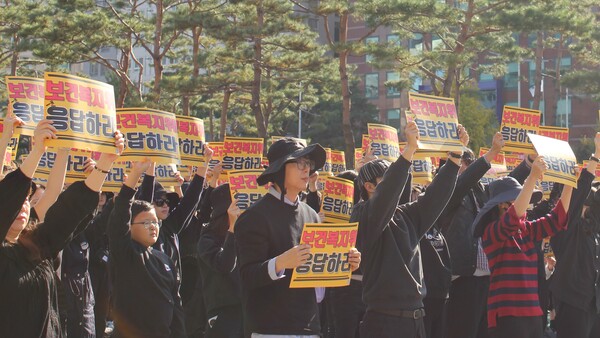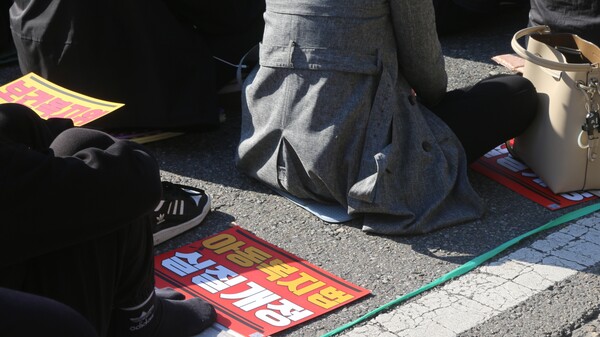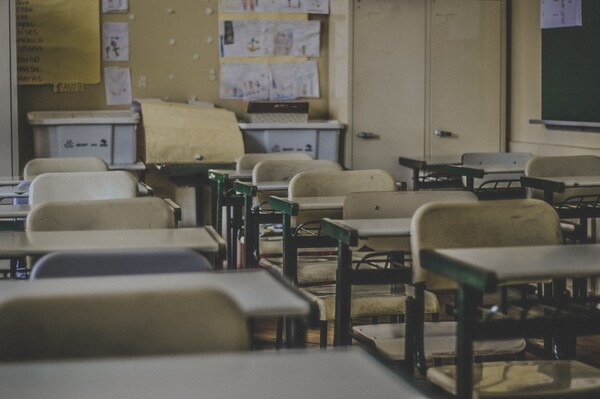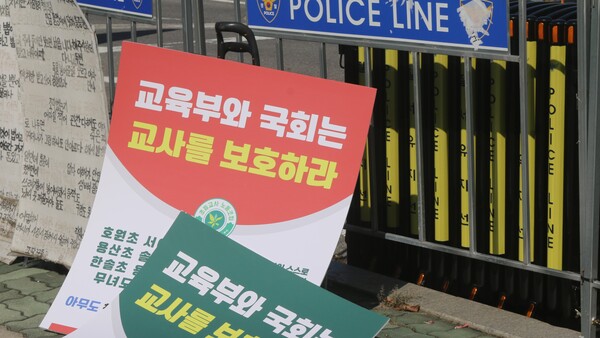
Dressed in black, over 120,000 individuals raised their voices in unison, demanding an amendment to the Child Welfare Law. On October 28, 2023, teachers, children, and university students gathered together in front of the National Assembly in South Korea. People lifted their placards and chanted slogans, and a moment of silence swept over the crowd when individuals on the stage began to speak. The speakers were mostly family members of the teachers who suffered or even lost their lives due to the absence of teachers' rights. Why do those in the rally insist on changing the law initially created to protect children?
New Concept, Old Problem
On July 18, a teacher working at Seoul Seo2 Elementary School took her own life in the classroom. There were rumors that she had been responsible for handling cases of school bullying and faced difficulties such as malicious complaints from parents. However, the police could not confirm any criminal charges, such as obstruction of duties or threats from parents. Nevertheless, this incident sent shockwaves through South Korean society. Previous cases were revisited, and many shared their experiences about “Gap-jil,” the physical or psychological abuse of power. As more of these issues arose, the term “Monster Parents” gained attention. How should we view parents who make unreasonable complaints or demands?
Monster Parenting: A Clear Attack on the Whole Community
Professor Kim Hyun-soo, a specialist in child and adolescent psychiatry published a book titled The Birth of Monster Parents (2023), diagnosing the problem as a societal ailment rather than an issue of individual character. With consumer[1]ism and performance-driven culture spreading fast in Asia, the competition for educational achievements has intensified. As a result, students and parents find themselves in a “the customer is always right” position.

Can the commercialization of education coexist with public education? The issue of low birth rates have also led to increased obsession and expectations surrounding their “one and only child.” However, we should not equate parents with monsters. Monster Parenting not only harms teachers but also students and other parents. Among the widely publicized cases of teacher abuse, the case of cartoonist Joo Ho-min may be the most familiar to readers of the Hanyang Journal (HJ). In September 2022, he accused a special education teacher of child abuse, based on what was recorded on a device his wife had placed in their son’s pocket. In December of the same year, the special education teacher was indicted by the prosecution, leading to her removal from her position a month later. The unexpected turn of events came to light when the case was widely discussed by the media this July. Not only fellow teachers but also the school and even parents of her special education pupils supported the teacher, insisting that she was not the person Joo had described her to be. It marked a notable change from the usual prevailing social atmosphere surrounding child abuse.
Moreover, many parents of special class students criticized that this incident had further deteriorated the perception of disabled students and their parents. As a result, everyone in the education community suffered.

Groundless Systems Place Burdens On Teachers in Charge of Homerooms
This case brings light to another issue. The emotional child abuse which led to the teacher’s prosecution is defined rather vaguely under Article 17 of the Child Welfare Law. That is the reason why the protesters of the October 28 rally gathered together. Various teachers suffer due to baseless complaints and accusations from malicious parents. In fact, only 1.6 percent of the reported child abuse cases lead to prosecution, showing the prevalence of unfounded accusations and reports. Newly appointed teachers are particularly stressed when dealing with these types of parent complaints and student guidance.

Teacher-Cultivating Education Programs Fail to Teach What it Takes to Become a Teacher

Regarding complaints and guidance, Yu Jeong-yoon, a junior majoring in Physical Education at Gyeongin National University of Education, explained her experiences with practice teaching. She emphasized the absence and need of accumulating practical knowledge related to student guidance.
“Four years of studying and one huge test decide whether one has what it takes to become a teacher. However, the curriculum at the university does not have much connection to the real tasks that homeroom teachers deal with. To become a teacher, I truly need to be taught by professors who can help enhance practicality in teaching, student guiding, and even communicating with parents.”
The Education Society: There is no Ground for “Learning”
As teachers spend a significant amount of time on administrative work and other tasks, their professionalism in teaching declines, and this deterioration is passed on to the students. It leads to a growing mistrust in public education and the infringement of the teachers’ rights. For most South Korean high school students, the main goal of education is a successful university entrance and this value is ingrained since elementary school. In a society where frontline teachers who interact with students are unable to reach the school curriculum and students are assessed based on standardized criteria, who can dream and fly freely?

The True Identity of Compulsory Education
Denmark is often hailed as a country with a happy education system and, is recognized as the EU nation that invests the most in education funding. Similar to South Korea, children aged seven to sixteen are required to receive compulsory education, but there is a crucial difference.
In Denmark, compulsory education means receiving education during the compulsory education period, not necessarily attending a state-designated “school.” As a result, alternative schools make up about 15 to 20 percent of all students in Denmark. In an interview with a student in Teacher Education at the University College of Copenhagen, HJ discovered an interesting fact. While most media outlets focused on the differences between Denmark and South Korea in terms of university admission, including high school and vocational school enrollment rates, the student mentioned that Denmark also has a low social perception of academic performance compared to students who attend vocational schools similar to South Korea. “I believe the most significant difference between the education curricula of Korea and Denmark lies in the ‘gap year’ that graduates of each educational level have before continuing their studies. In Denmark, the gap year is highly valued because it allows students to gain practical experience related to their career paths or engage in deep contemplation about their own life paths. It is a time to truly dream and take action.”
The Golden Time for Educational Innovation
In addition to the gap year, Denmark is famous for its participatory education, which emphasizes activities such as debates and individual tasks rather than merely receiving knowledge. South Korea has made efforts to incorporate these participatory activities into the curriculum, but their effective implementation is challenging.

Chairman Jung Sung-kook of the Korean Federation of Teachers’ Associations (KFTA) mentioned overcrowding in classrooms as the reason for the difficulty. He pointed out that teachers can only allow individual interactions when there are fewer than 20 students per class. Reducing the number of students per class would lead to a decreased workload for teachers, improved teaching expertise, and a true focus on students’ career paths. He strongly advocated student reduction as an essential for educational reform.
When asked whether South Korea’s educational infrastructure is prepared for significant educational innovation, it becomes clear that even the most basic human right, the right to live, is threatened. Without considering the three elements of education - teachers, students, and the curriculum - what is educational innovation really aiming for?


